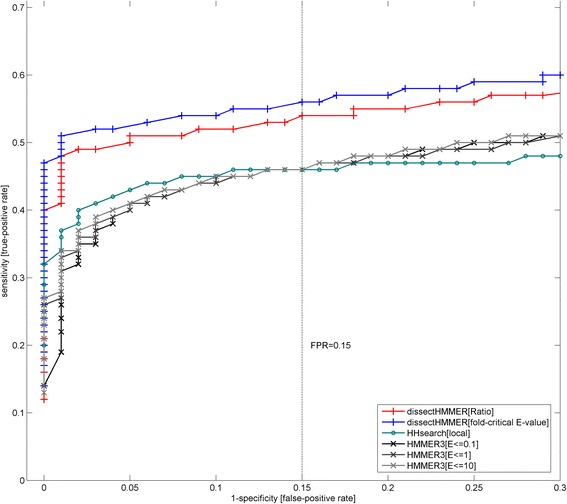Fig. 6.

ROC (receiver operator curve) plots for dissectHMMER, HHsearch and HMMER3 against SCOP-to-Pfam mapping set. The domain detection for the SCOP superfamily (based on fold similarity) is generally a difficult task for sequence-based search methods. Towards the false-positive rate of 1, HHsearch, HMMER3 and dissectHMMER only detected up to 50 % (3067), 63 % (3767) and 65 % (3890 for fold-critical measure; 3894 for ratio measure) of the 5966 mappable Pfam models respectively. At the false-positive rate (i.e. 1-specificity) of below 0.15, HMMER3 (a sequence-to-profile method) performed worse than HHsearch (a profile-to-profile method) as expected. Beyond 0.15, HMMER3 picked up higher sensitivities than HHsearch when false-positive rates went over 0.15 but large false-positive rate thresholds are rarely considered. Meanwhile, dissectHMMER’s plots hovered above that of both HMMER3 and HHsearch by a considerably margin, thus suggesting that it is more capable at detecting Pfam domains that share a superfamily fold; thus, better bridging sequence similarity search space and structural similarity search space. Note that the error rates are separately derived from the empirical distributions of the negative domain hits in the vicinity of the SCOP-to-Pfam sequences
